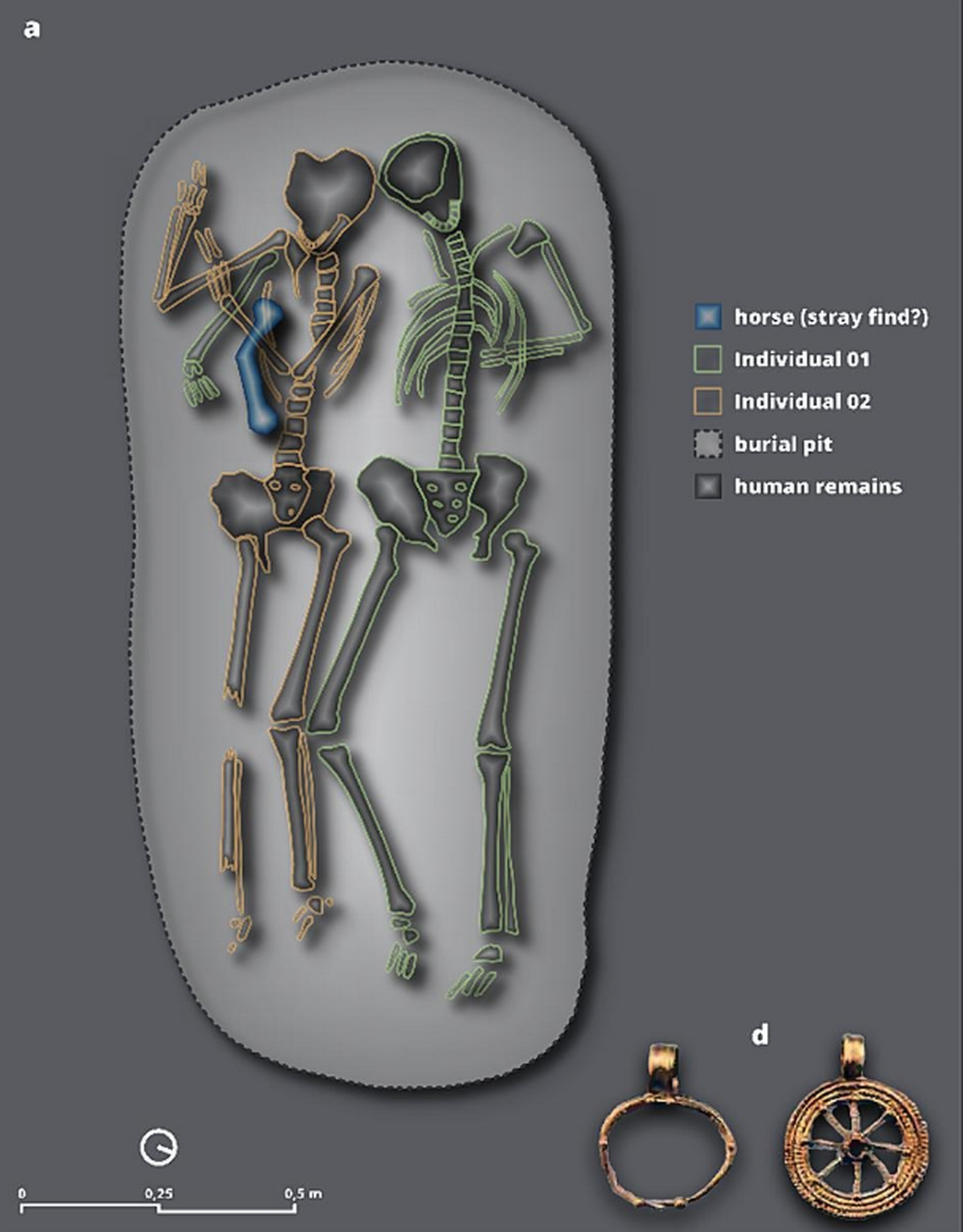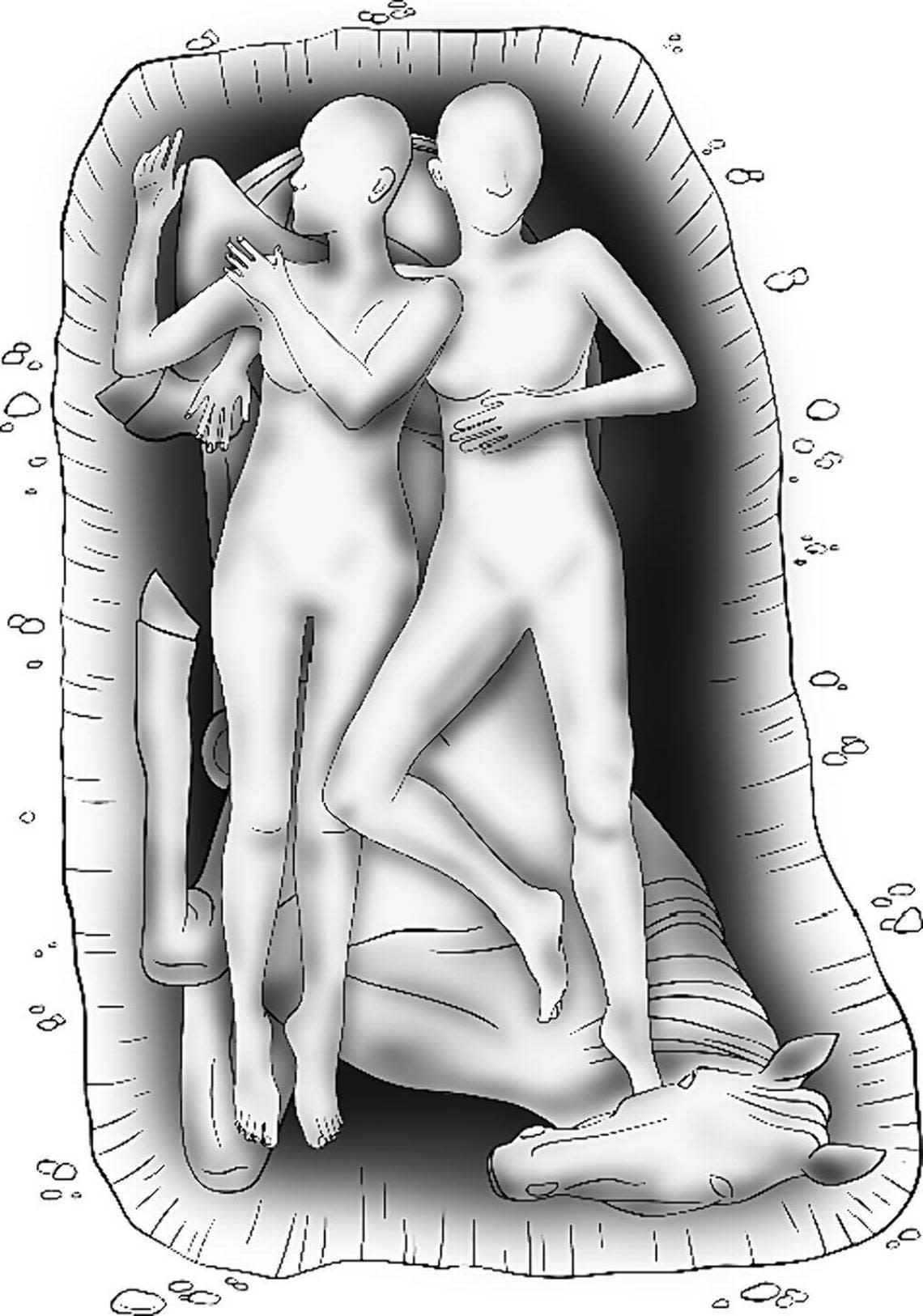Two ancient women buried together in Austria in first of its kind find. ‘Remarkable’
As construction workers were building a parking garage for a train station in Austria, human remains appeared buried in the dirt.
The year was 2004, and excavations of the site led to 220 ancient burials being discovered, some with full bodies and others containing cremated remains.
But one of these graves was not like the others. Grave 12, as the team called it, contained two sets of human remains in the same grave, one in the embrace of the other. Underneath, the full remains of a horse were uncovered, according to a study published in the May issue of the Journal of Archaeological Science: Reports.
The grave was thought to belong to two lovers dating to the medieval era, when horses commonly accompanied the dead, according to the study.
But the couple seemed out of place.

Uncover more archaeological finds
What are we learning about the past? Here are three of our most eye-catching archaeology stories from the past week.
→ Massive 2,200-year-old tomb with grand interior unearthed in China
→1,000-year-old weapon — the first of its kind — found sticking out of grave in Spain
→ Workers unearth steelworks at medieval castle in UK — and find someone's 'hidey-hole'
The site itself was predominantly of Roman origin, once the location of Ovilava, an economic and administrative hub for traders and artisans at the crossroads of Roman routes, researchers said.
Citizens of Ovilava were buried in necropoleis along the road at the entrance to the city, the majority from the Roman time, but a few of which dated to much later in the 6th to 8th centuries of the Early Middle Ages, according to the study.
The remains of the duo were transferred in 2019 to osteologists, or bone researchers, at the University of Vienna, where they could be studied more closely.
“This burial was remarkable for two reasons: firstly, the arrangement of the two individuals, with individual 1 having an arm around individual 2, and secondly, the presence of equine skeletal remains in the same burial pit directly below the human remains,” according to the study.
Researchers soon learned they weren’t a man and woman in love, as previously thought based on arm positions and their heights. Instead, it appeared to be a beautiful example of another type of love — between a mother and her daughter.
“The right arm of Individual 1 lay around the shoulder of Individual 2, which was interpreted as as sign of a close social connection and emotional binding between the two individuals,” the authors wrote.
Using genetic analysis, researchers discovered the remains belonged to two women, one between 40 and 60 years old and one between 20 and 25 years old, according to the study.
When they compared their DNA, the team found the remains belonged to two women who were directly related, and given their age difference, researchers believe they belong to a mother and daughter.
Carbon-dating the remains also showed that the women were from the same Roman age as the other graves discovered at the site, making them about 500 years older than originally thought, according to the study.
Pendants and jewelry found buried with the bodies were used to confirm their Roman origins, researchers said.

“For Austria, this finding is the first genetically verified double burial of 1st-degree relatives from the Roman period,” according to the study. “The positioning of these two individuals suggests simultaneous burial, indicating their likely simultaneous death. Absence of evidence for an accident, violent altercation, or severe disease in the bones leads to hypothesis that an infectious disease caused their deaths.”
The burial with a horse is also unique for the Roman era, researchers said, but the older woman’s bones suggest she was a frequent horse rider. This led researchers to suspect the horse may have been included because of the mother’s love for horse-riding.
Including a horse with the burial was just one sign of their likely high status in Roman society, researchers said.
“Furthermore, the two pieces of golden jewelry speak for a high social status,” researchers wrote. “Already in prehistoric times, wheel pendants were considered a popular amulet also in the Roman period and may be understood as a solar symbol. The crescent-moon-shaped pendant, known as a lunula, is commonly interpreted as an apotropaic amulet, indicative of a female wearer, as seen in Roman mummy portraits from Egypt.”
Researchers now have a clear picture of the womens’ relationship, but there are still many unanswered questions regarding the circumstances of their death and the social practices of their burial.
The archaeological site is in modern-day Wels, in north-central Austria.
Ancient Mayan compartments — used to hold water — discovered in Mexico. See them
‘Mysterious’ purple lump found at ancient Roman ruins was once ‘worth more than gold’
Ancient shells — found in American West — may have been used as trumpets, study says
Package from mystery sender arrives at Poland museum — with missing artifacts inside
